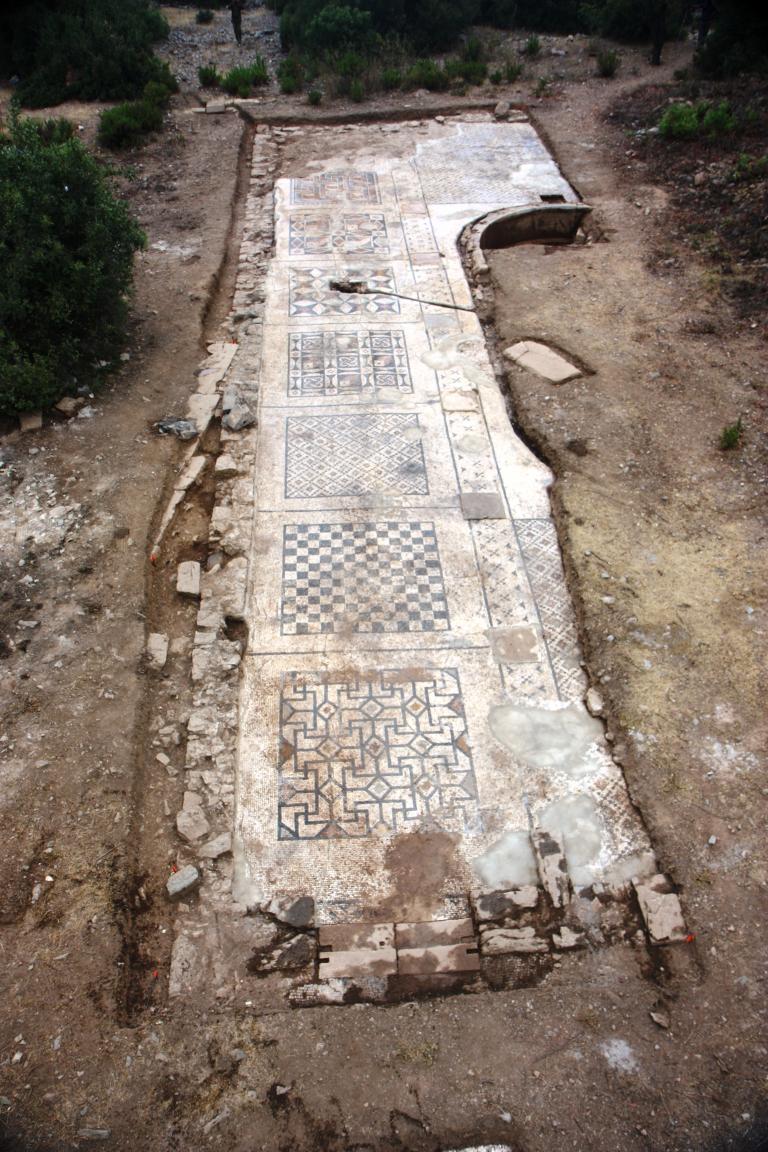Hoff receives grant for archaeological research in Turkey
calendar icon23 Oct 2019

Lincoln, Neb.--School of Art, Art History & Design Professor of Art History Michael Hoff has received a nearly $200,000 grant from the U.S. Department of State and the U.S. Embassy in Ankara for his archaeological research in Turkey.
“I was very pleased that we received this grant,” Hoff said. “It’s going to help us tremendously in our desire to preserve these mosaics.”
Since 2005, the University of Nebraska has been excavating the remains of the ancient city of Antiochia ad Cragum, located on the southern Turkish coast. This ancient city was founded in the middle of the 1st century A.D. by Antiochus of Commagene, a client-king of Rome.
The grant is budgeted over four years and is earmarked for cultural heritage projects. Hoff plans to use the grant to focus on preserving the Roman mosaics they have found at the site. The grant will fund four Turkish conservators, along with interns, to help clean and preserve the seven whole or partial mosaics already uncovered at the site, as well as additional ones yet to be uncovered.
“The city has turned out to be extremely rich, in terms of mosaics,” Hoff said. “None of which had been exposed before we arrived. Since we began 15 years ago, we have uncovered a number of mosaics, and certainly we will be finding more mosaics as we move forward because we know where several are. These are going to be pretty spectacular, so it’s important for us, as good stewards, to preserve these pavements and repair the damage that’s been caused over the last 2,000 years.”
Hoff said the mosaics are tremendous icons.
“They are a well-known expression of the Roman Empire,” Hoff said. “The Romans didn’t invent mosaics, but they certainly brought the art form to its highest point. The mosaics that we have uncovered, I think, rank high in terms of mosaic decoration. So far, we have found geometric forms, but also some figural mosaics that have been quite stunning.”
The finds promise to be a draw for tourists, which could potentially create a better local economy.
“It’s going to positively affect everyone,” Hoff said. “They’re already coming more than there ever has been because of social media. We’ve noticed an uptick in people coming by the site.”
This past summer, Hoff and his team uncovered two more mosaics, near a smaller bath area.
“One of which is extremely long, and it will be the second largest mosaic that we have,” Hoff said. “It’s going to take a while to clear. The first mosaic [in 2013] was only 10 centimeters under the ground. This new mosaic is almost three meters below.”
The team uncovered about one-fourth of this new mosaic this past summer. He expects it will take another three summers to fully excavate this new mosaic. The team also found the bodies of two murder victims on top of the new mosaic.
“So far, two murder victims have been found on this mosaic, and clearly more will be coming,” Hoff said. “This small bath was a place of execution, probably during an invasion. It likely represents the end of the town, so we are trying to learn more about this.”
Hoff and his team will continue the work of uncovering the past.
“Every trench that we dig unlocks another piece of the puzzle of understanding this ancient city,” he said.